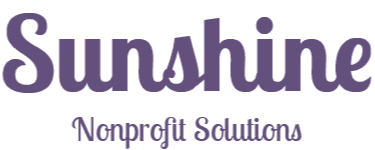
Prepare Your Nonprofit to Craft a Successful Grant Proposal

Navigating the process of writing a grant proposal can feel overwhelming for many nonprofit leaders and fundraising professionals. With strict deadlines, detailed requirements, and high stakes, it's easy to see why the grant-writing process often feels like a daunting uphill climb. But here's the good news—you don’t have to tackle it alone or unprepared.
Whether you're a seasoned grant writer or just getting started, preparing your nonprofit organization is a critical first step toward success. Crafting a compelling proposal isn’t only about meeting requirements; it’s about persuading grant funders that your mission aligns with their priorities and that your organization has the capacity to deliver real results.
This guide will walk you through the essential steps to prepare your nonprofit, ensure you align with funder priorities, and craft a strong, competitive proposal. From engaging your board to streamlining your goals with SMART strategies, we’re here to help you build a foundation for funding success.
By the end, you’ll not only have a clear roadmap for the grant-writing process but also the confidence to turn "what if" into "we did it." Let’s set your nonprofit up for success—it starts here!
Preparing Your Organization
Foundational Components
The ideal time for preparing your organization is before you have a grant submission deadline in eight weeks. Your organization will need foundational components for an effective grant. Preparing your organization encompasses gathering (and updating) the legal documentation and fiscal procedures, engaging your Board of Directors, and developing a strategic plan with goals and objectives.
Sunshine Nonprofit Solutions provides business planning and strategic planning services to enhance your organization and prepare for writing funding proposals.
Required Legal Documents
- Federal and state tax-exempt status paperwork (e.g., 501(c)(3) letter).
- Recent tax return (990 form) and single audit.
- DUNS number and EIN (Employer Identification Number).
- Board of Directors roster and bylaws.
- Fiscal procedures (if required by the RFP).
Engaging Your Board of Directors
Communication is Key
Engaging your Board of Directors is critical to a grant proposal’s success and begins with open communication. Provide information about your organization—its mission, goals, and impact—through reading materials and short videos created by your staff and clients.
Tools for Engagement
- Use platforms like Diligent for board interaction between meetings.
- Share abstracts and visual logic models to illustrate proposed programs.
Strategic Plans and SMART Goals
Crafting Your Mission Statement
Successful nonprofit organizations develop strategic plans with a mission statement and articulated goals. Your mission statement broadcasts your values, what you do, and why you do it.
Transforming Vague Goals into SMART Goals
Example of a vague goal:
"Sunshine Nonprofit Organizations will create healthy, safe, and welcoming environments."
Rewritten as a SMART goal:
"Sunshine Nonprofit Organization will create healthy, safe, and welcoming environments for highly disadvantaged families by December 2024, measured by the 'Family Readiness Checklist.' This includes private spaces with comfortable furniture, trained staff, and multicultural décor."
Aligning with Funder Priorities
Research and Adaptation
- Explore the funder’s website to align your mission with theirs.
- Review previously funded proposals for insights.
Letters of Inquiry (LOI)
When required, write an LOI that clearly connects your project to the funder’s priorities. Use resources like GrantWatch and grants.gov to identify opportunities.
Crafting the Proposal
Key Sections (Ordered by Importance)
- Budget
- Staffing
- Project Plan
- Evaluation Plan
- Community Needs
- Organizational Capacity
Budgeting Tips
- Link every cost to specific activities and outcomes.
- Share budget schematics with stakeholders for feedback.
Staffing Strategies
- Offer competitive salaries and benefits to retain talent.
- Invest in training and supervisor engagement (e.g., Gallup’s employee recognition strategies).
Writing with the 3 C’s
Clear, Concrete, Confident
- Clear: Avoid jargon. Explain activities as if to a friend.
- Concrete: Use active voice and specify resources (e.g., "Social workers will receive monthly role-play training").
- Confident: Replace "if funded" with "when funded."
Evaluation and Impact
Measuring What Matters
- Focus on outcomes, not just activities (e.g., "2% of families secured housing in 2 months").
- For RFPs requiring external evaluators, involve them early (e.g., Sunshine Nonprofit Solutions).
Final Steps
Share and Proofread
- Circulate drafts to staff, board members, and community partners.
- Hire a proofreader (e.g., Scribendi) for polish.
Submit with Confidence
Double-check formatting and upload all required forms. Celebrate—you’ve submitted your best proposal!
Get Expert Guidance
Why Go It Alone?
Sunshine Nonprofit Solutions offers:
- End-to-end grant writing support.
- Tailored strategies for your nonprofit’s needs.
Next Steps:
- Book a free consultation
- Subscribe to our blog
About Dr. Cathleen Armstead
With 25+ years in nonprofit leadership and an 88% grant success rate, Dr. Armstead founded Sunshine Nonprofit Solutions to empower organizations through funding, training, and strategic planning. A sought-after speaker and author, she blends academic rigor with real-world impact.
Reach Out Today
Share your thoughts or requests to help us support your nonprofit's mission.
Let's collaborate on data-driven strategies for impactful growth and community benefit. Reach out to us now.
Contact Us
Office location
8948 Sw 224Th Terrace, Cutler Bay, Florida, 33190Give us a call
(407) 304-7689Send us an email
[email protected]